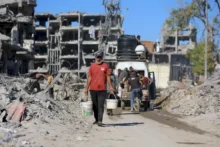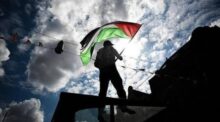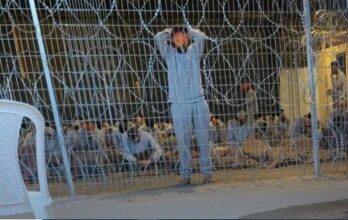Al-Khamisa News Network - Gaza

How the press covered the Gaza war.. Special Report Prepared by: Tarek Washah
Since the outbreak of the war on Gaza on October 7, 2023, Gaza has become the focus of global media attention, but that attention has not been evenly distributed: between local Palestinian press reporting from the heart of the catastrophe under extremely harsh conditions, and international media facing severe restrictions imposed by Israeli forces, this dynamic has deeply affected Arab and global public opinion, sparked waves of protests and boycotts, and prompted notable diplomatic shifts.
The voice of truth amid the rubble: How did Palestinian media report events?
Under conditions that can only be described as catastrophic, Palestinian journalists and media outlets became the world’s primary window onto what was happening in Gaza, despite power outages, scarce equipment and the siege of hospitals with severe shortages of supplies. They turned daily stories of death and suffering into footage and reports reaching millions, providing most of the filmed footage and eyewitness testimony relied upon by global broadcasters and social media.
Global media relying on local reporters: With foreign journalists barred from entering, the whole world became dependent on the Palestinian narrative. Impromptu phone videos, selfies from inside hospitals, and live broadcasts from amid the rubble all became valuable material circulated by the largest international media organizations.
Policy of barring foreign journalists: Why were international cameras blocked?
Since the first day of the war, Israeli forces imposed strict restrictions on the entry of international journalists into the Gaza Strip, allowing only small escorted groups under tight military supervision, and at times closing the crossings completely. The policy drew widespread condemnation from press unions and international organizations, which demanded the “right of access” and called the ban a deliberate denial of the world’s ability to obtain independent testimony.
When journalists become targets
This war recorded an unprecedented number of journalists killed while covering the conflict. According to the Gaza government media office, more than 255 media workers were killed in the Gaza Strip, including 27 female journalists. In addition, 433 were injured and 48 detained while covering the Israeli offensive. Organizations such as the “Committee to Protect Journalists” and “UNESCO” have described what happened as “the deadliest for journalists in the history of modern conflicts.”
Destruction of media infrastructure: Silencing the voice of truth
It was not only journalists who were targeted; Gaza’s media infrastructure suffered systematic destruction. Offices of media organizations, journalists’ tents and equipment warehouses were destroyed. According to Palestinian official data, Israeli forces demolished 12 print media institutions, 23 digital outlets, 11 radio stations and 16 satellite channels, in addition to five major printing presses, 22 small printing shops and 53 homes of journalists. This destruction deprived local media of the ability to operate effectively and increased the world’s reliance on fragmented information and short social media clips rather than comprehensive reporting.
The power of images: How scenes shook public opinion and sparked action
Images and videos from Gaza fueled solidarity in Arab and international streets. The harrowing scenes of civilians and children under the rubble turned abstract statistics into a tangible humanitarian tragedy, putting pressure on governments to act.
Popular and student awakening: Waves of unprecedented demonstrations and sit-ins spread across universities and public squares from the United States to Europe and the Arab world, with protesters carrying signs calling for an end to the war and support for Palestinian rights. Protests included prolonged student sit-ins that refocused attention on the issue.
Boycotts with real impact: Popular anger translated into action through wide-ranging boycott campaigns targeting companies and products seen as supporting the occupation, as well as cultural and academic boycotts. Officially, these pressures led some governments to reassess their positions and even to begin diplomatic steps toward recognizing the Palestinian state.
Global positions: Who defends journalists’ right to report?
The United Nations and organizations such as “UNESCO” and the “Office of the High Commissioner for Human Rights” condemned the repeated targeting of journalists. They called for independent investigations and protection for media workers and urged an end to the media blockade on Gaza. More than 100 major media outlets joined a joint campaign protesting the denial of access and the targeting of colleagues, demanding the right to cover the war without fear.
In the end, Gaza’s journalists proved that truth does not die. Despite all attempts to silence them, they continued to report, film and write. They knew they might pay with their lives for every photo and every report, but they believed their mission was more important than their lives.



